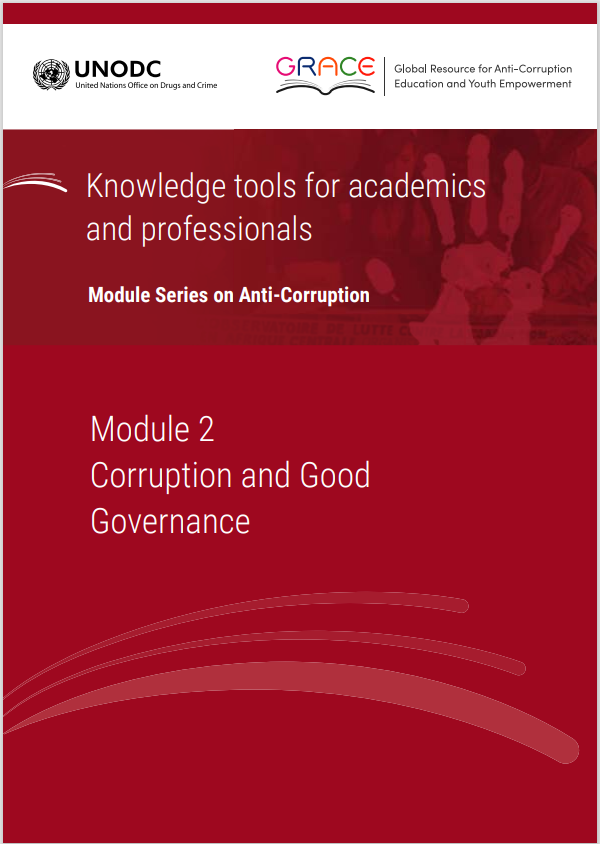This module is a resource for lecturers
Guidelines to develop a stand-alone course
This Module provides an outline for a three-hour class, but there is potential to develop its topics further into a stand-alone course. The scope and structure of such a course will be determined by the specific needs of each context, but a possible structure is presented here as a suggestion
|
Session |
Topic |
Brief Description |
|
1 |
Introduction |
Concept of government and governance, general relationship with corruption |
|
2 |
Concept of good governance |
Definitions and ideas behind the concept, related to corruption |
|
3 |
Principles of governance |
Main principles, how they work, what challenges are posed for each principle |
|
4 |
Measurement of governance principles |
Measures of governance and widely used indices such as the World Bank Indicators, Index of Public Integrity, Indicators of Good Governance |
|
5 |
Bad governance and corruption |
Relationship between bad governance and corruption; consequences for societies |
|
6 |
Case studies and identification of governance measures for effective prevention of corruption |
Case studies could include corruption in procurement, corrupt policy design, network dealings that allow capture of large state budgets, and blatant violations of laws and regulations. Governance measures would be identified and discussed. |
|
7 |
Role of civil society |
Based on the principles of good governance, the role of civil society should be discussed |
|
8 |
Role of education |
Based on the principles of good governance, the role of education should be discussed |
|
9 |
Governance reforms |
Strategies of how to increase the quality of good governance; what should be avoided |
|
10 |
Summary and critical reflection |
Final discussion and future prospects of good and bad governance; challenges of the concepts related to corruption |
 Back to top
Back to top
